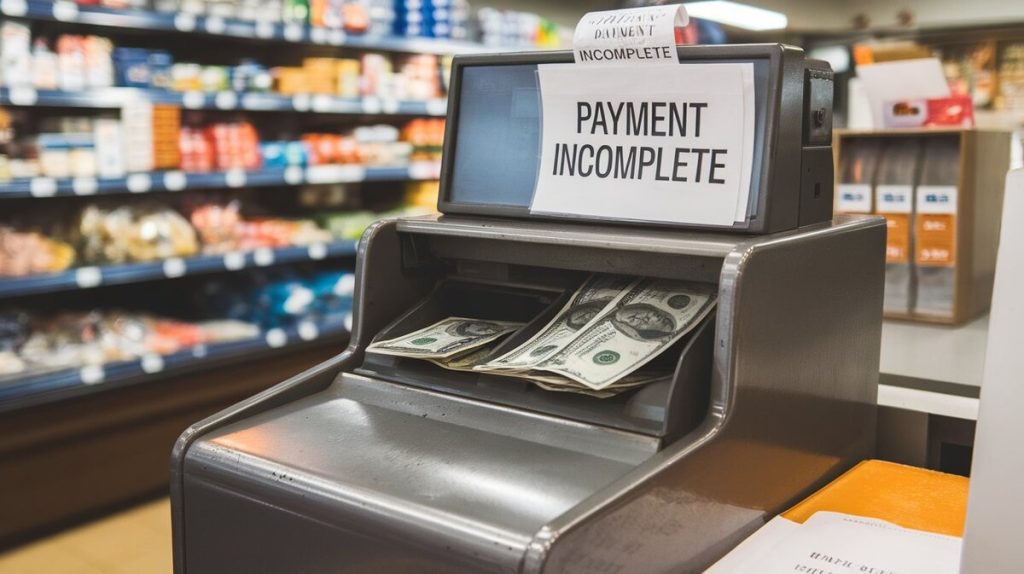Incomplete payments in Stripe occur when a customer starts a checkout process but fails to complete the transaction. This issue directly impacts revenue and requires attention from merchants to minimize its occurrence. This article explains the main causes of Stripe incomplete payments, how to manage them, and the most effective strategies for reducing them.
What Are Incomplete Payments in Stripe?
Incomplete payments in Stripe happen when a customer begins a transaction, but it doesn’t go through for various reasons. Stripe uses the PaymentIntent system, which logs every initiated payment. If the transaction isn’t completed, the payment remains incomplete. This could be due to customer abandonment, failed authentication, or technical issues during processing.
Table 1: Common Causes of Incomplete Payments
| Cause | Description | Percentage Impact* |
|---|---|---|
| Abandoned Checkout | Customers leave the checkout before completing the payment. | 69% |
| 3D Secure Failure | Payment fails due to authentication issues with 3D Secure. | 15% |
| Expired Cards or Insufficient Funds | Payment fails due to expired cards or insufficient funds. | 10% |
| Gateway Errors | Technical errors during transaction processing, like API or network failures. | 6% |
Main Causes of Incomplete Payments
- Abandoned Checkout: Approximately 69% of online shoppers abandon their cart before finishing their purchase. This is the most common cause of incomplete payments. Customers may leave due to complicated checkout processes, unexpected costs, or distractions.
- Authentication Failures: About 15% of incomplete payments happen because of failed authentication. The use of 3D Secure adds extra steps, which can frustrate customers and lead to payment failures.
- Technical Failures: Stripe or network errors can cause 6% of incomplete payments. These errors may stem from API failures, network timeouts, or misconfigured systems.
- Card Declines: Expired cards or insufficient funds account for 10% of incomplete payments. These issues often occur without warning to the customer, leaving the payment incomplete.

Managing Incomplete Payments
Merchants can handle incomplete payments by using several strategies to improve the checkout process and recover potentially lost revenue.
1. Monitor Incomplete Transactions in Stripe Dashboard
Stripe provides tools to monitor incomplete payments. Merchants can view customer details, payment attempts, and failure reasons. By tracking these events in real-time, businesses can:
- Identify failure patterns.
- Set up alerts for incomplete payments using Stripe’s webhook system.
- Engage users who abandoned checkout with recovery strategies.
2. Send Automated Recovery Emails
Automated emails are a useful method to recover incomplete payments. Once a payment fails or is abandoned, the system sends an email reminding the customer to complete the purchase. These emails have a 15-20% recovery rate.
Key elements of recovery emails:
- Reminder to complete the purchase.
- Order summary of abandoned items.
- Call-to-action directing the customer back to checkout.
Table 2: Email Recovery Effectiveness
| Recovery Method | Average Recovery Rate | Cost-Effectiveness |
|---|---|---|
| Automated Email Sequence | 15-20% | High |
| SMS Follow-Up | 5-8% | Medium |
| Personalized Discounts | 20-25% | High |
3. Optimize the Checkout Process
A simple checkout process can reduce incomplete payments. Data shows that a complex checkout flow is one of the top reasons for customer drop-off.
Steps to optimize checkout:
- Reduce checkout steps to one or two pages.
- Enable guest checkout to avoid forcing customers to create an account.
- Ensure the checkout is mobile-friendly. Mobile devices account for over 50% of e-commerce traffic.
- Offer multiple payment methods, including cards, digital wallets, and alternative payment solutions.
Chargeback Prevention
While incomplete payments may not directly cause chargebacks, unaddressed abandoned carts can lead to disputes. To minimize the impact, chargeback prevention services like Merchanto.org offer tailored solutions. Merchanto.org is an official Visa and MasterCard partner, helping businesses prevent chargebacks effectively. Using their services, merchants can reduce disputes and recover lost revenue.
Best Practices to Reduce Incomplete Payments
1. Use Stripe’s PaymentElement
The PaymentElement is a unified, flexible payment interface that supports various payment methods. It helps ensure that more payments are completed successfully. With PaymentElement, the PaymentIntent is confirmed immediately, reducing the chance of incomplete payments caused by technical failures.
2. Set Up Webhooks for Real-Time Monitoring
Stripe allows businesses to set up webhooks to receive real-time alerts on payment failures or incomplete payments. This helps:
- Immediately notify teams of payment issues.
- Trigger automated recovery emails or text messages.
- Track the reason for payment failure, helping identify common issues to fix.
3. Implement Recovery Incentives
Offering incentives to customers who abandon their carts is an effective way to recover payments. For example, providing a 5-10% discount to customers who return within 24 hours can lead to an increase in recovery rates of 10-15%.
Other incentives include:
- Free shipping for orders above a certain value.
- Offering a free gift for orders completed within a limited time.
Table 3: Incentives to Encourage Payment Completion
| Incentive Type | Recovery Rate Improvement | Cost to Merchant |
|---|---|---|
| Discount (5-10%) | 10-15% | Low |
| Free Shipping | 5-10% | Medium |
| Bonus Item (Free Gift) | 8-12% | High |

Technical Solutions for Developers
- Webhooks for Payment Tracking
Developers should set up Stripe webhooks to monitor events such as failed payments or incomplete PaymentIntents. These webhooks allow businesses to:
- Get real-time alerts for incomplete payments.
- Automate follow-ups with customers immediately after a failure.
- Identify and fix any technical issues causing payment failures.
- Retry Logic for Subscription Payments
Subscription-based businesses often face payment issues on the first transaction. If a subscription payment remains in an incomplete state for more than 23 hours, it may be marked as incomplete_expired and canceled. Implementing retry logic for these situations can help reduce failed transactions. - Optimize PaymentIntent Setup
Developers can optimize the PaymentIntent setup by ensuring that the required payment methods are available and supported. For example, enabling popular local payment methods or integrating alternative digital wallets increases the chances of payment completion.
Additional Considerations
Real-Time Monitoring
Monitoring incomplete payments in real time through Stripe’s dashboard or webhooks allows businesses to detect issues as they happen. This can reduce manual intervention and enable quicker recovery through automated systems.
Understanding Incomplete Status for Subscriptions
Incomplete payments are common in subscriptions, particularly when customers sign up for a service but don’t complete the first payment. Stripe marks the status as incomplete_expired after 23 hours if no payment is confirmed. This auto-cancellation can be avoided by implementing retry logic and sending reminders to the customer to update their payment method.
Conclusion
Handling incomplete payments effectively is crucial for any business using Stripe. By monitoring transactions, optimizing checkout processes, and using automated recovery strategies, businesses can recover lost sales and improve customer satisfaction. Implementing webhooks, incentives, and technical optimizations like PaymentElement also reduces the likelihood of future incomplete payments.
This article presents a practical, data-backed guide to understanding and managing incomplete payments on Stripe, emphasizing actionable strategies, recovery methods, and technical solutions for merchants and developers alike.



